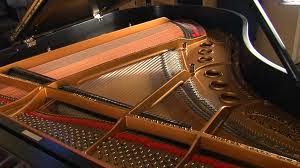Previously restricted to medical centers, this procedure is now available for hair and beauty salons around the world.
But how does laser hair removal technology work?
The Technology Behind Laser Hair Removal
Laser hair removal uses laser light pulses to get rid of unwanted hair by destroying hair follicles. After around three to five treatment sessions, it is possible to achieve permanent hair loss. The number of session may however vary depending on a number of factors such as sex, skin color and location of the hair.Laser hair removal works by directing bursts of laser light onto a specific part of the body with hair. The light is absorbed by hair follicles which then get destroyed and with time the attached hair falls out. These pulses of light only target areas around hair follicles ensuring that the rest of the skin does not get damaged.
Ideal candidates for laser hair removal in a hair salon or a clinic are those with dark hair and light skin. Blonde and red hair is much more difficult to get rid of. Advanced laser light removal machines are now capable of removing dark hair on dark skinned individuals with increased effectiveness.
Laser Hair Removal in Today's Hair Salons
The use of laser hair removal in hair salons has been on a steady increase. The ease of use of laser hair removal equipment and the relative safety of the procedure has greatly facilitated this increase in popularity. This is however not to mean that anyone can conduct a laser hair removal procedure on you. Ensure that whoever is doing it is well trained.At a hair salon, the process of removing hair using laser technology can take a few minutes or up to an hour depending on where the hair is being removed form. For the lower lip and bikini line, the process is fairly quick. Arms and legs require much more time to work on.
After the procedure, you will probable experience a sunburned feeling. This is normal and should subside within a few days. You just have to avoid sun exposure for several weeks after and even before treatment. If the burning feeling is too much, your dermatologist may give you some anti-inflammatory cream or you can put some ice on the burning area. You will undergo several treatments until all hair is permanently gone.
An example of one hair salon in Peoria, IL that's adopted this technology is Five Senses Spa & Salon. As one of the leading hair salons in Peoria, IL, Five Senses Spa & Salon has found this specialty hair removal service to be highly sought after by new and existing clients.
A Safe & Effective Hair Removal Solution
Laser hair removal is much more effective as compared to waxing or tweezing and also less pain is involved. Many hair salons have adopted this technology as a better alternative to traditional hair removal techniques. Any side effects such as skin discoloration or permanent scarring are rare. So basically it is a safe, quick, simple and most importantly effective procedure.For more information about laser hair removal, a great article was published at Oprah.com. We encourage interested individuals to read this unbias and informative source.





